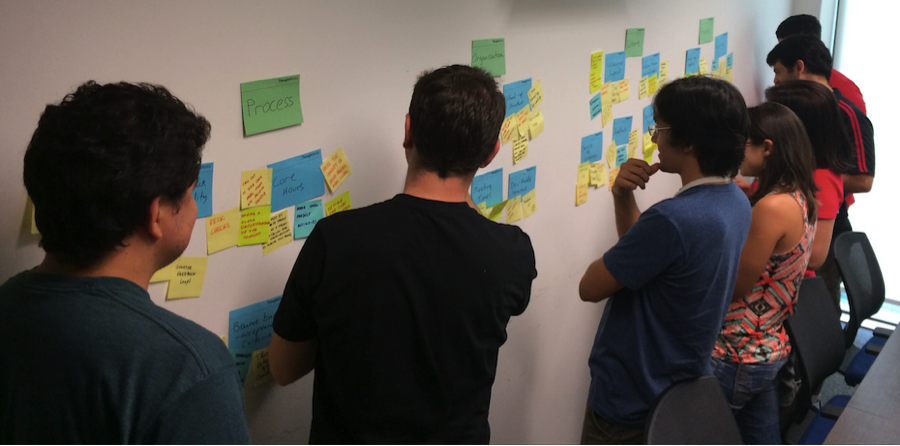Disclaimer: The statements and opinions expressed in this article are those of the author(s) and do not necessarily reflect the positions of Thoughtworks.

Whether it is a project rescue, a team under delivery pressure or a realization that your standard Agile rituals are not working, a Reverse Retrospective helps create solutions for known, recurring issues.
Held at the end of each iteration, retrospectives are a core part of Agile projects – the opportunity to reflect on performance, learn and adjust behaviours.
In a typical retrospective, the team will capture ideas and issues on stickies or cards in a time- boxed session and place them on a wall. The individual items will be discussed for clarification and grouped by a facilitator. The team will vote on the most important items to be addressed in the remaining time. Because most of the retrospective is spent setting context and agreeing on the most important items, there is often little time left for developing solutions. (For more information on making retrospectives fun and effective, refer to the excellent blog http://www.funretrospectives.com/).
But what if the issues facing the team are already known and long-standing? The same issues may be experienced and raised in each cycle, but they are not resolved. Since only the “most important” are addressed in each retrospective, it is possible for important issues and improvement opportunities to never be addressed.
Over time a team may see the same issues being raised in consecutive retrospectives, but not discussed, as there may be more urgent, but perhaps less important, items voted on each cycle. This is common in a project rescue situation, or when the team is under delivery pressure. They may feel frustration with the standard retrospectives not allowing known and recurring issues to be discussed.
When the issues facing a team reach a critical mass and are well known, what are needed are solutions. The team can generate solutions in a single session, using a Reverse Retrospective, in place of their regular retrospective.
A Reverse Retrospective starts with known issues captured and grouped on the wall by the facilitator (my next blog will discuss how to identify and group the issues). Each issue will be discussed briefly to ensure that they have been captured accurately. The team will then add as many potential solutions as possible in a time-boxed period.
Any team member can place new issues on the wall on the condition that he/she also provides two potential solutions for it.
The facilitator will group similar solutions throughout the exercise. The team is then encouraged to generate additional solutions based on early ideas.

The facilitator will then discuss each potential solution, seeking clarification from the author and adjusting to ensure shared understanding. With shared understanding achieved, the team can agree on actions, timeframes and an owner for each action.
After the session, the facilitator will capture the issues, solutions and actions on a physical card wall, or for distributed teams, into a shared document. This will allow the team to come together regularly to review progress.
In the same time that it takes to run a regular retrospective, the team has generated solutions, actions, owners and deadlines for known issues.
In my next post, I will discuss how to collect and group the issues facing a team, and how to ensure that team members are held accountable for closing their actions.
Disclaimer: The statements and opinions expressed in this article are those of the author(s) and do not necessarily reflect the positions of Thoughtworks.
